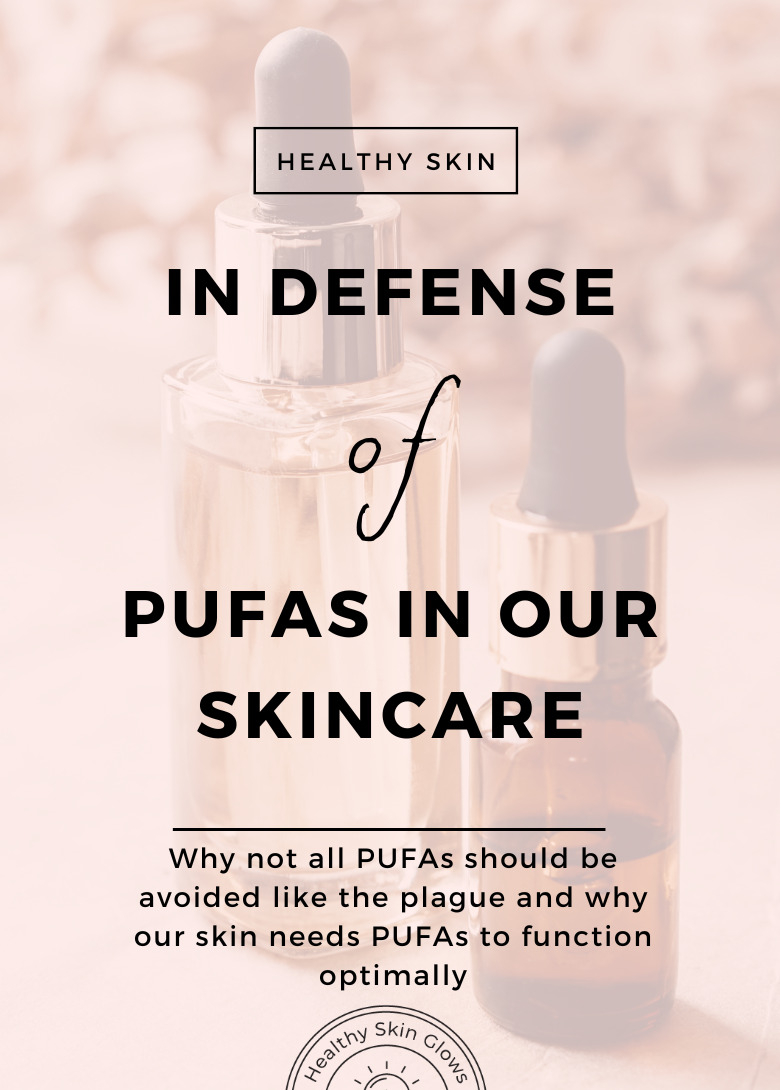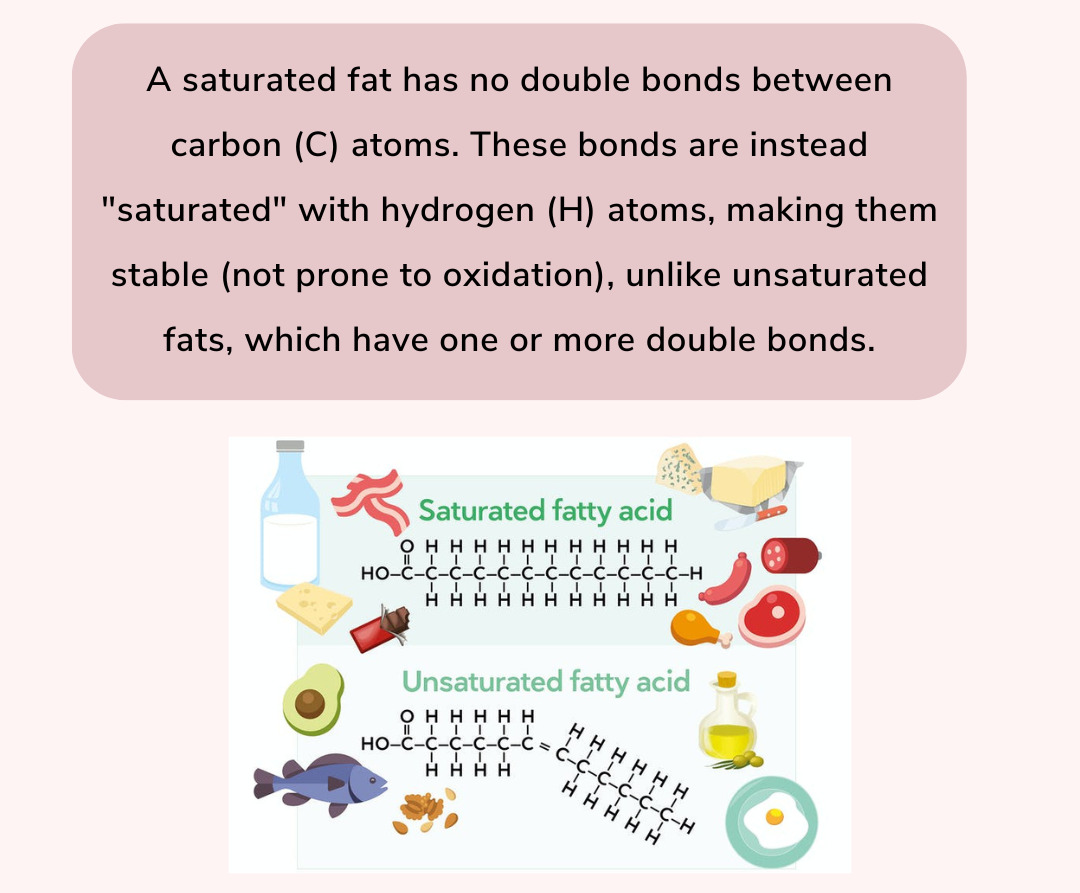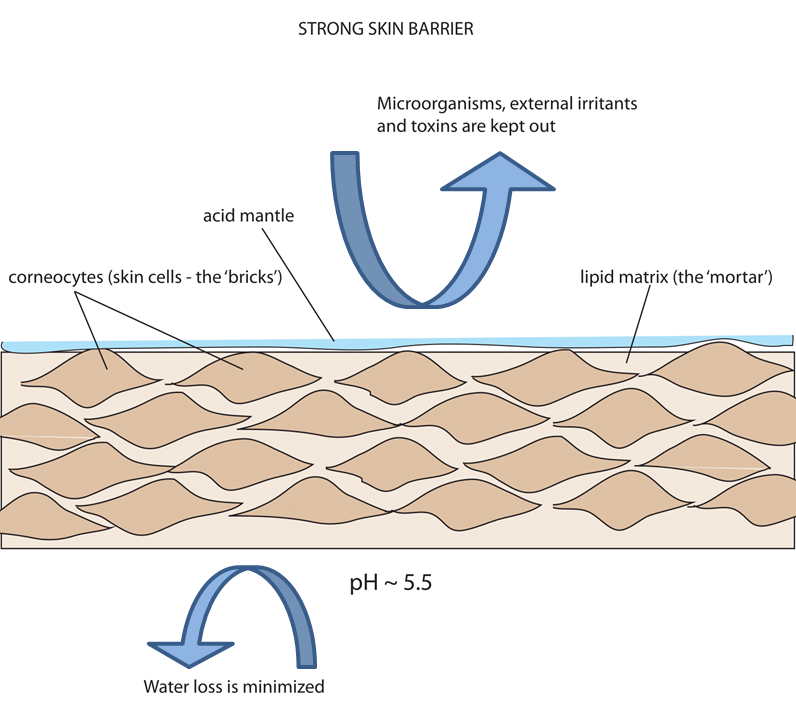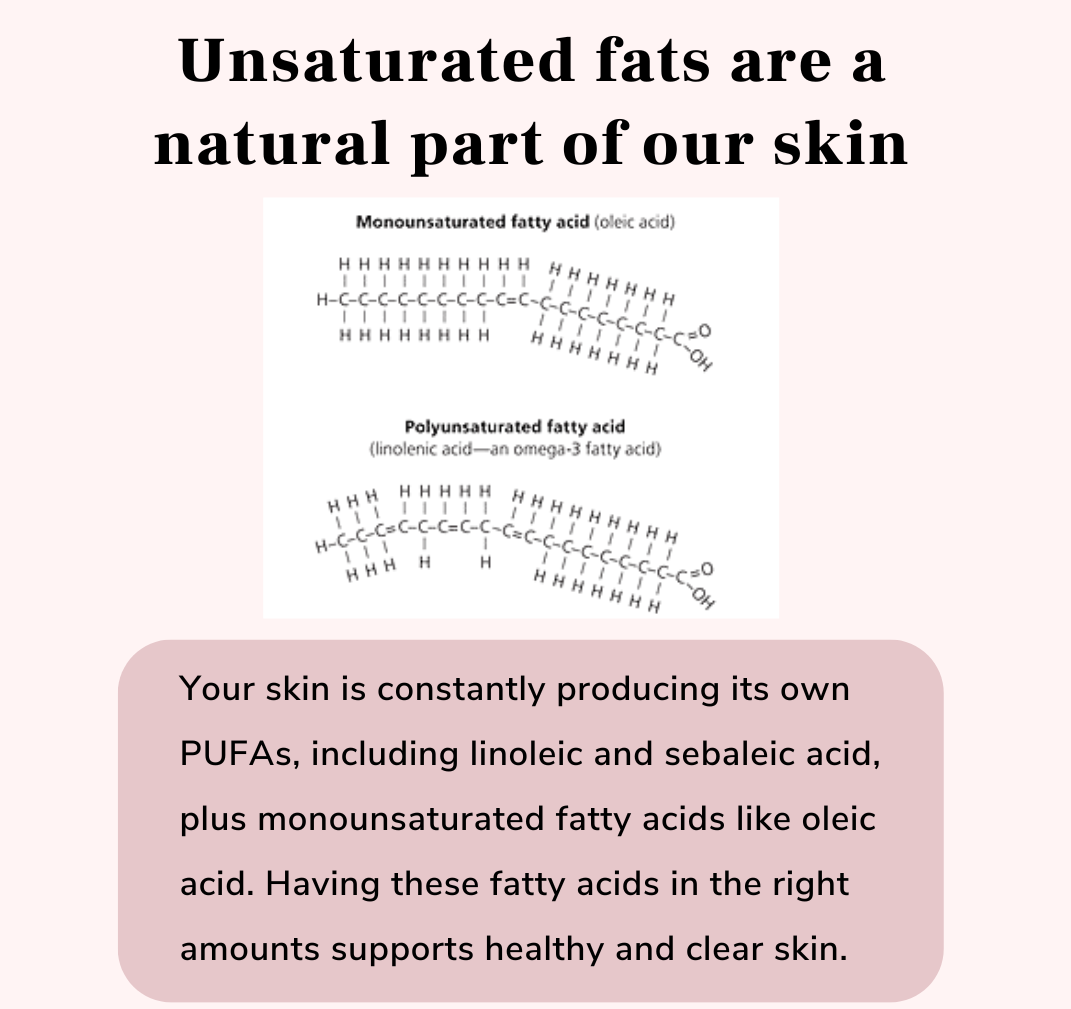
With the rising awareness of the ill health effects of the industrial seed oils (like canola, sunflower, soybean, etc), we have also started to question should we also not remove all PUFAs from our skincare?
Aren’t they going to damage our skin, just like those industrial seed oils do when we consume them?
The truth is, as usual, somewhere in the middle.
Unsaturated vs saturated fatty acids
Let us start from the beginning and explain the difference between saturated and unsaturated fatty acids.
A saturated fat has no double bonds between carbon (C) atoms. These bonds are instead “saturated” with hydrogen (H) atoms, making them stable (not prone to oxidation), unlike unsaturated fats, which have one or more double bonds.
Again, it is these double bonds that are unstable and prone to oxidation (reaction with oxygen).

See how that unsaturated fat has that “kink” right where the double bond is? This is largely responsible for keeping the fat liquid at room temperature since the fatty acids cannot stick together as completely as saturated fats can.
Polyunsaturated fatty acids simply have more of those double bonds (making them even more prone to oxidation), and are what we will refer to as PUFAs.
Linoleic acid (omega 6) is naturally found in our skin
From a skin health point of view PUFAs, and more specifically linoleic acid (an omega 6), are absolutely vital for the appearance and health of our skin, especially when we are talking about the skin barrier function.
The skin barrier is the outermost layer of the skin (stratum corneum) which consists mainly of flattened skin cells, keratin, fatty acids (the most abundant of which is linoleic acid), ceramides, cholesterol and natural moisturizing factor (NMF).

The main functions of the skin barrier are to protect our body from UV radiation, pollution, harmful substances and microorganisms like bacteria, viruses and fungi (they should not enter the deeper layers of our skin nor our bloodstream).
The skin barrier is also responsible for maintaining proper hydration levels within the skin, reducing Trans Epidermal Water Loss (TEWL).

There is an overwhelming body of research proving that most skin diseases like eczema, psoriasis, rosacea, and acne are associated with some level of impaired skin barrier. When the skin barrier is not functioning properly the skin becomes vulnerable, sensitive, prone to inflammation, redness dehydration and ultimately unable to effectively heal itself.
Linoleic acid is the most abundant fatty acid in our skin barrier, being a vital part of many processes, including synthesis of ceramides, making sebum and more.
But what about the topical application?
Ok, sure, linoleic acid, a PUFA, is an essential part of our skin barrier, strongly implying it isn’t inherently bad for our skin. Our skin requires it daily to function optimally.
Still, don’t we get all we need from dietary sources? Why would we apply any source of linoleic acid topically?
We already mentioned that PUFAs oxidize easily. This is why, in nature, they come packed with antioxidants (like vitamin E), which protect those delicate fats from oxidation.

Despite the abundance of omega 6 and PUFAs we might be getting in our diet (which we need to be careful about), we could still have a topical linoleic acid deficiency (just in the top layers of our skin). This can be due to, for example, topical disruption of the skin barrier or overproduction of sebum (which can happen for various reasons).
This localized linoleic acid deficiency has been shown to cause clogged pores (see image below).
Applying a source of linoleic acid topically (for example, oils high in linoleic acid) is an effective way of delivering extra linoleic acid.
Furthermore, oils with proven skin healing properties happen to be polyunsaturated by nature. A good example here is black cumin oil which is loaded with minerals and skin beneficial elements like zinc, calcium, folacin, iron, copper, phosphorus, riboflavin, thiamin, carotenes, proteins and more. Thymoquinone in black cumin is the most important constituent for the skin’s health as it has been scientifically proven to provide anti-inflammatory, anti-bacterial, anti-viral and anti-fungal properties.
PUFAs that help acne prone skin
The aforementioned local deficiency in linoleic acid has been repeatedly linked with acne. Topically applied linoleic acid has also been shown to have a beneficial effect on reducing the microcomedones (first stage of acne).
PUFAs like linoleic acid are often invaluable in repairing the skin barrier, delivering anti inflammatory properties and decreasing skin dehydration. Moreover unrefined, cold pressed or CO2 extracted oils are rich in additional nutrients beneficial for the skin health.
Lastly, PUFAs are generally non comedogenic and penetrate the skin rapidly and fully without leaving an oily after feel. They are not the magic bullet for everyone as some people just don’t tolerate any oils, but if they work for you, there is no reason to avoid them or be afraid of them.
Summary and types of products to look for
PUFAs oxidise very quickly, which is one of the main reasons that we now avoid them in our diet (referring to modern industrial seed oils here, not traces of PUFAs found in healthy traditional foods).
This oxidative process can be significantly slowed down by the use of antioxidants and in cosmetics there are 2 main ingredients we use – Vitamin E (tocopherols) and Rosemary extract, both are equally effective just make sure one of them is present in the products you are using.
Oxidation can be sped up by light and air as well so best is to look for opaque packaging with a pump or airless containers
In terms of oil extraction, the most common practice is cold press, so the first thing to look for is cold pressed and organic.
However, there is a more advanced way that produces oils with longer shelf life and are also more nutrient dense called CO2 extraction. This method is more expensive and therefore not very common but it is worth keeping an eye for them.
Bottom line, linoleic acid’s only drawback is its affinity to fast oxidation which can be significantly slowed down by the use of antioxidants and proper packaging.
The benefits of using some loaded with skin loving properties oils, that happen to be polyunsaturated are huge so if your skin does well when using oils just make sure you get your products from reputable sources and they are protected by anti-oxidants and packaged properly.
What has been your experience with such oils? Let us know in the comments!
